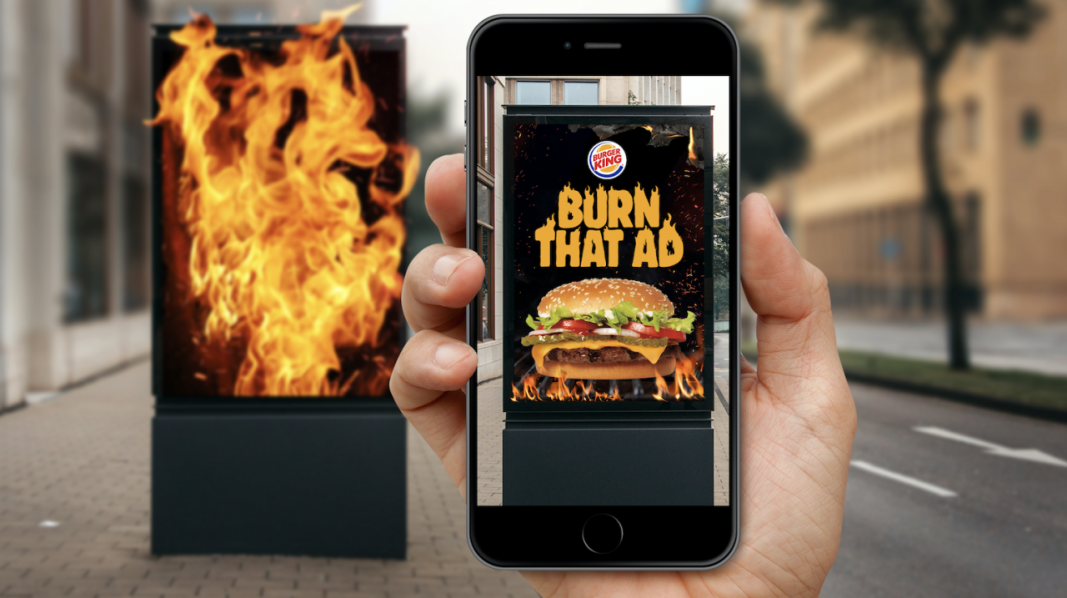Real-Time Marketing and the King
As a technology that transcends the plains of both physical and virtual reality, augmented reality (AR) has superseded VR. It’s not enough for customers to don custom-made headgear and be transported into a virtual realm of endless possibility. Audiences now want to engage in the real-time world with the endless possibilities of the virtual one.
Augmented reality as DIY marketing
Burger King’s latest advertising campaign combines its customers’ love for adaptive, interactive technology and delicious fast food.
An in-app feature was developed so users could interact in real-time with physical advertisements of Burger King’s main competitors to, well, “burn” them. Their engagement (and loyalty) was further rewarded with a complimentary BK Whopper voucher.

The campaign was the brainchild of David SP and ran exclusively in Brazil. It was run to promote Burger King Express, a feature that allows customers to skip the queue by pre-ordering.
Before Burger King’s tongue-in-cheek prod at their competitor brands, several others have tried their hands at implementing AR marketing campaigns.
In 2013, Coca-Cola focused its efforts and resources into an AR campaign collaboration with WWF called ‘Arctic Home’. The campaign comprised of an AR stunt at the London Space Museum that emphasised the loss of habitat faced by polar bears in the Arctic. As polar bears have been a long-time mascot of the company, the campaign partnership created awareness and raised funds towards conservation efforts for the Arctic.
Pepsi MAX took it to the next level in 2014 with their ‘Unbelievable Bus Shelter’ campaign. Set up at select bus shelters around London, HD screens played live video feeds with accompanying 3D animations, providing commuters with a real-time experience of alien UFOs, falling meteors, and suspicious tentacle monsters rising from the underground to snatch people off the street. The YouTube video gained over two million views and over 24,000 shares within a week, earning it several awards through the years.
Marketing without borders
What we see here is that as a virtual realm, AR is an outlet of experimentation in marketing with many benefits.
It allows audiences to have an interactive brand experience. And by creating a sense of personalisation through your campaign, you further improve your customer journey experience.
AR advertising is also more accessible. Not many customers pay attention to billboards or print ads in this age of modern tech. As long as your customers have a smartphone, they will be able to engage with your campaign.
Integrating AR into a marketing campaign creates a world of advertising without boundaries. Marketing and development teams are given free rein to explore their creativity without the limitations of the real world.
And due to the virtual nature of AR, campaigns which contain it are more easily adjusted and oftentimes cost a lot less than a wholly physical marketing campaign.
Augmented reality continues to prove its sustainability as an avenue for assisting, if not leading, marketing campaigns. As more businesses transition into digital marketing, it’s an invaluable asset to keep at the forefront of their marketing strategy.